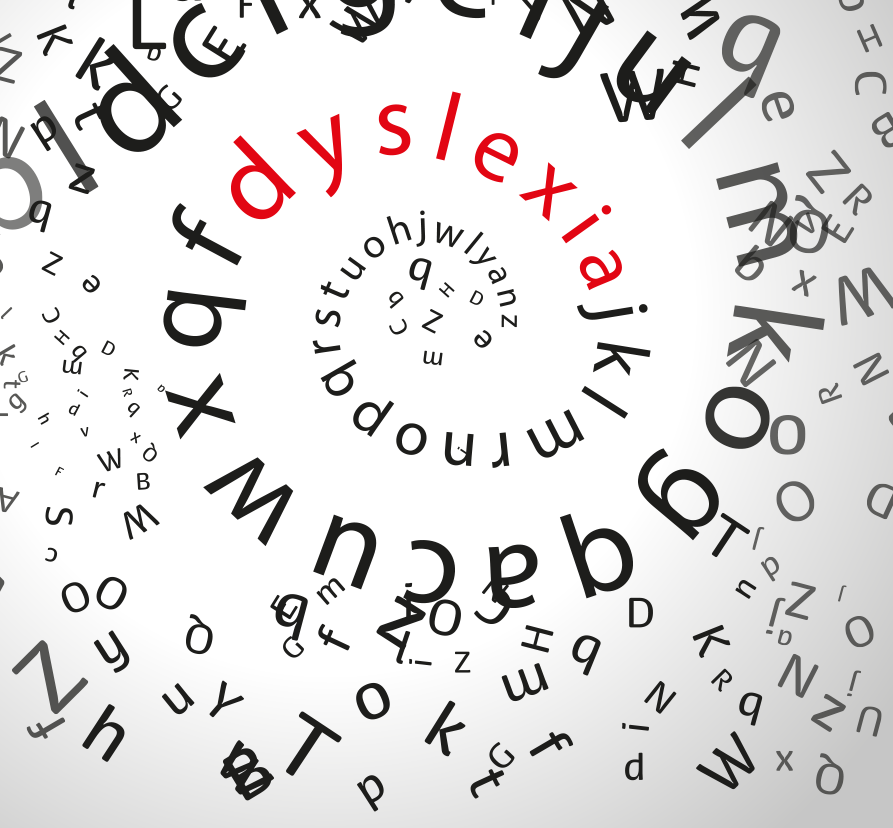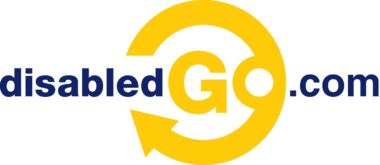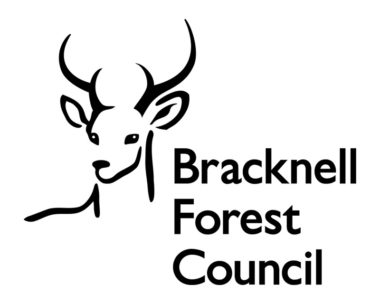I am sure that most of you have heard of dyslexia, and a lot more of you have been diagnosed with the disability in later years. It is great that, nowadays, dyslexia is being identified at an early stage. This early diagnosis not only gives people peace of mind but assists in providing ways of coping and empowering individuals with the equipment that can help in day-to-day life.
I must say that I had difficulty reading and writing at school, but this was before dyslexia was closely examined in the education system. This was before I lost my sight and was encouraged to get a more manual job due to my school results (although I was brilliant at maths if I do say so myself).
When I lost sight, I was lost on what to do, so I enrolled in a touch-typing class. Feeling encouraged, I then finished an ‘Access To Higher Education’ college course before eventually getting a 2-1 degree in Psychology and Criminology. It just proved to my teachers and the careers officer that I could do a degree with my eyes shut, lol. So, just because you have been diagnosed with Dyslexia, this should not stop you from getting to where you want to be.
I must say that things like the computer and spell check assisted me greatly, as I could hear what the word was meant to be. Saying that today, the spell check even gives you a description of what the word means. Although there have been many advancements in technology, there are still barriers out there; mostly, they are human-made. Perhaps saying this is unfair, but when building a website, there are many tools to choose between and depending on how they are used determines how accessible a platform will be.
An Insight Into Dyslexia And The Internet
In this section, I asked Shaw Trust team member Keasha Kwarifa, who works in Individual Placement and Support, to give me an insight into dyslexia and the internet:
Having dyslexia affects my internet use in several ways. Reading quickly and accurately can be challenging, making it harder for me to comprehend information from websites or online content. Spelling and typing skills are also impacted, making tasks like searching for information or communicating online more difficult. The abundance of text on the internet can be overwhelming, and navigating through extensive content can be fatiguing. Following sequential tasks or instructions may be challenging, due to difficulties in sequential processing.
When I mention that instructions may be challenging due to difficulty in sequential processing for dyslexia, I’m referring to how individuals with dyslexia may struggle with tasks that require processing information in a step-by-step or sequential manner. Dyslexia is a learning disorder that, for me primarily, affects reading and language processing, but it can also impact other cognitive functions to my understanding.
Understanding Sequential Processing
Sequential processing involves understanding and following instructions in a structured and successive order. For someone with dyslexia, this can be challenging because they may have difficulty:
- Following a sequence of steps. This is due to some people having trouble remembering and executing the order of tasks or instructions.
- Organising information. This includes struggling to process and organise information in a logical sequence, which can lead to confusion or errors in following instructions.
- Retaining sequential information. Remembering the order of events or steps may be challenging, affecting their ability to complete tasks accurately and efficiently.
To support people with dyslexia in processing sequential information, instructions must be presented clearly, concisely, and structured. Breaking down tasks into smaller steps, again this is just my take, due to my lived experiences.
Exploring The Three Accessibility Issues That Keasha Kwarifa Raised
Different Online Search Facilities
While assessing websites, I am amazed at how many search facility variations exist.
There are ones where you start typing, and the results are filtered down, and you are presented with different variations that may be useful. For example, if looking for accessibility, I may start typing ‘acc’, and below the edit box is a list of results on everything starting with ‘acc’. Hopefully, accessibility will be there. However, this may not be as helpful for someone with dyslexia if they start the initial word with the incorrect letters. In my case, when using a screen reader, there is a lack of knowledge of what is in the list below the edit box unless venturing down to see what is there, and sometimes this list disappears entirely due to it being mouse-dependent.
Other search facilities are very strict on what you can look for. For example, do you put the search term as plural or singular? By adding a ‘s’, you may get different results or, worse, gain no results at all.
For someone who is dyslexic, a search facility in a web browser can be a great asset. If it is set up correctly, categorisation is considered. Asking someone whether the typed word is what they meant or providing an alternate spelling along with the results ensures that everyone can successfully find their required information.
The Abundance of Text On A Web Page
This issue is easy to rectify. Make sure there is:
- Clear spacing between short paragraphs.
- Alternative formats, such as the use of inclusive media.
- Bulleted lists to break up content.
- Stylised headings between information sections will guide everyone to the subheading and the relevant information below it.
- Content written in user-friendly language.
Find out more about how to meet web standards with your content.
Forms Regarding Sequential Processing
I had not thought of the differences in how forms are set out. There are a few issues for me regarding forms, but not taking in consideration other disabilities. For example, a page with many questions ranging from personal details to qualifications and even cultural information. Being presented with this much information could be quite daunting for someone who has dyslexia. However, forms that are categorised down into smaller sections can help people to better concentrate on the page’s questions and not become overwhelmed by facing the whole form at once.
Dyslexia And Digital Accessibility Conclusion
Many tools within websites allow interaction, but perhaps a little more knowledge is needed to understand which ones are more effective regarding accessibility on the internet.
Displaying your web page content in an inclusive way and providing helpful hints and tips to guide users, provides maximum impact and more importantly, helps to relay your website information to everyone.
Realising what is needed to make the World Wide Web accessible to all and not just to make it look pretty is getting better. However, there is still so much more work and re-educating that is needed for a truly inclusive digital space.







